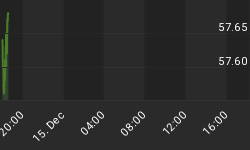Last week we discussed the New York Stock Exchange's daily New Lows and how they related to the market.
Today, we will look at how the market follows what Institutional Investors are doing. As a group, they are responsible for over 50% of the owned stocks that trade every day. I purposively stated it that way because HFT (high-frequency traders) can have larger daily volumes ... but they are really scalpers who don't own the stocks they trade (in a portfolio). Institutional Investors can own a stock for months, while HFT's own a stock from seconds, to minutes, and sometimes hours. The key for them is that they have no net investment position at the end of the day.
So, Institutional Investors were and still are an extremely formidable force in the market and trading against them ends usually ends up as a lesson in costly pain.
Take a look at today's chart that show's when Institutional Investors have been in Accumulation or Distribution and whether there was up trending or down trending going on. Notice the green line from October to May that showed down trending in Accumulation (lower/highs) and a Negative Divergence.
In the beginning of May, a short stay in Accumulation shifted back to Institutional Investors rushing to a state of Distribution. The actual date they shifted back to Distribution was May 3rd. on the chart. The amount of Distribution has moderated in the past two days, but not enough to change the trending to an up trend yet. (FYI: This chart is updated and shown every day on the Standard Subscriber website. This particular chart will not be shown again on this free site until sometime in June.)

















